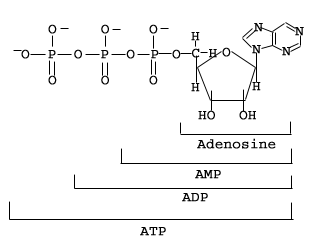Please wait while we process your payment
If you don't see it, please check your spam folder. Sometimes it can end up there.
If you don't see it, please check your spam folder. Sometimes it can end up there.
Please wait while we process your payment

By signing up you agree to our terms and privacy policy.
Don’t have an account? Subscribe now
Create Your Account
Sign up for your FREE 7-day trial
By signing up you agree to our terms and privacy policy.
Already have an account? Log in
Your Email
Choose Your Plan
Individual
Group Discount
Save over 50% with a SparkNotes PLUS Annual Plan!
 payment page
payment page
Purchasing SparkNotes PLUS for a group?
Get Annual Plans at a discount when you buy 2 or more!
Price
$24.99 $18.74 /subscription + tax
Subtotal $37.48 + tax
Save 25% on 2-49 accounts
Save 30% on 50-99 accounts
Want 100 or more? Contact us for a customized plan.
 payment page
payment page
Your Plan
Payment Details
Payment Summary
SparkNotes Plus
You'll be billed after your free trial ends.
7-Day Free Trial
Not Applicable
Renews May 2, 2025 April 25, 2025
Discounts (applied to next billing)
DUE NOW
US $0.00
SNPLUSROCKS20 | 20% Discount
This is not a valid promo code.
Discount Code (one code per order)
SparkNotes PLUS Annual Plan - Group Discount
Qty: 00
SparkNotes Plus subscription is $4.99/month or $24.99/year as selected above. The free trial period is the first 7 days of your subscription. TO CANCEL YOUR SUBSCRIPTION AND AVOID BEING CHARGED, YOU MUST CANCEL BEFORE THE END OF THE FREE TRIAL PERIOD. You may cancel your subscription on your Subscription and Billing page or contact Customer Support at custserv@bn.com. Your subscription will continue automatically once the free trial period is over. Free trial is available to new customers only.
Choose Your Plan
This site is protected by reCAPTCHA and the Google Privacy Policy and Terms of Service apply.
For the next 7 days, you'll have access to awesome PLUS stuff like AP English test prep, No Fear Shakespeare translations and audio, a note-taking tool, personalized dashboard, & much more!
You’ve successfully purchased a group discount. Your group members can use the joining link below to redeem their group membership. You'll also receive an email with the link.
Members will be prompted to log in or create an account to redeem their group membership.
Thanks for creating a SparkNotes account! Continue to start your free trial.
We're sorry, we could not create your account. SparkNotes PLUS is not available in your country. See what countries we’re in.
There was an error creating your account. Please check your payment details and try again.
Please wait while we process your payment

Your PLUS subscription has expired
Please wait while we process your payment
Please wait while we process your payment

Cellular Energy Sources
The goal of cellular respiration and metabolism in animals and plants is, ultimately, the conversion of one type of energy source to another. Presumably, the original energy source comes in a form that cannot be immediately used to support cellular activities. For humans, our external energy sources are the foods we eat. Once we ingest and digest the food, our cells metabolic processes convert the energy contained within the food into a form of energy that can function in our cells. These constant conversions are what allow us to perform our day-to-day activities.
Since energy is the ultimate goal of metabolism, it will be helpful to understand what these various external and internal energy sources really are. As we have mentioned, food is the external energy source for humans. Different foods are composed primarily of one of the following three macromolecules: carbohydrates (breads and pastas), lipids (fats and oils), or proteins (meats and beans). During digestion of food, when the food is first broken down internally, these large molecules are broken into subunits. Depending on their type, subunits can be metabolized in different ways and then used as internal energy sources.
The distinct means of metabolizing specific subunits all have the same goal, the production of the primary cellular energy source: adenosine triphosphate.

As you can see in the figure above, ATP contains three phosphate groups. These groups are primarily responsible for ATP's role as an energy source. During metabolic reactions, these phosphate groups can be transferred from ATP to yield either adenosine diphosphate (ADP) or adenosine monophosphate (AMP).
ATP -> ADP + P + energy, orThe release of one or more phosphate groups is energetically favorable: the reaction produces energy. ATP can also undergo a reaction with water to yield ADP or AMP to release energy. The cell can use the energy produced from the breakdown of ATP for whatever purpose is necessary. Often, the energetically favorable breakdown of ATP is often coupled with another, energetically unfavorable reaction that is designed to drive the first reaction forward through the synthesis of additional ATP.
ATP -> AMP + 2P + energy
ATP synthesis is almost exactly opposite to the process by which ATP is broken down to produce energy: phosphate groups are brought in contact with either ADP or AMP. While this process is not as favorable, it is able to occur with the energy derived from metabolizing foods. In addition to ATP, there are a number of other reactive molecules that are involved in the production of cellular energy. These are called coenzymes and their role is to help transfer other chemical groups like hydrogens. Coenzymes work in conjunction with metabolic enzymes to drive metabolic reactions. Among these are nicotinamide adenine dinucleotide (NADH) and acetyl coenzyme A. We will discuss the specific roles of both these molecules more in following sections.
Please wait while we process your payment

